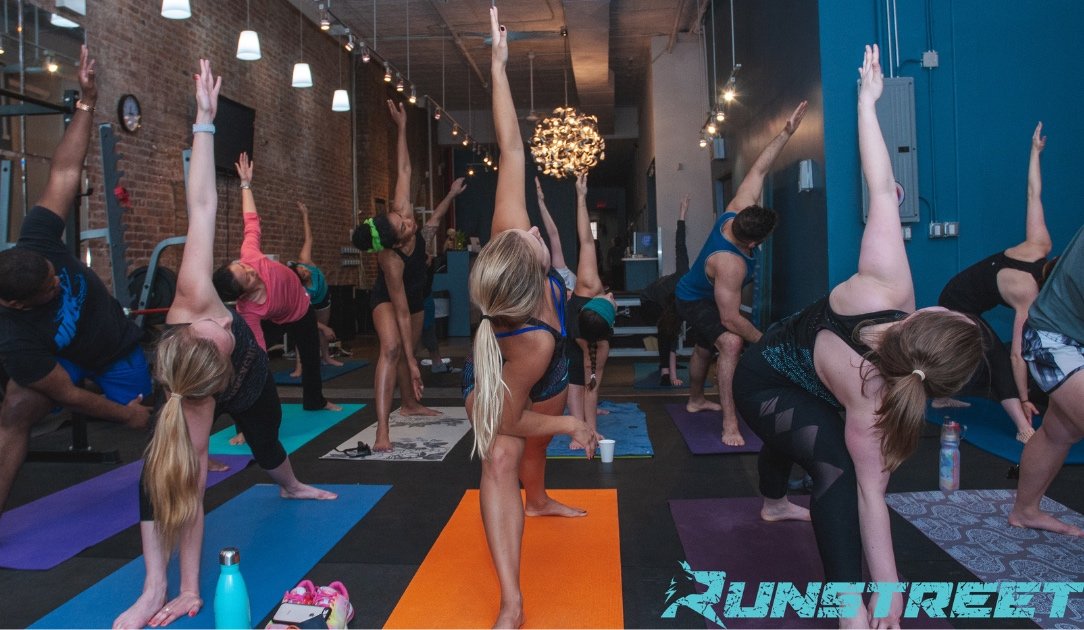Run Stronger, Recover Faster - Your Guide to Yoga for Runners
Photos by Marques Jackson Photography.
By Marnie Kunz,
Certified trainer and run coach
In partnership with adidas
Running is one of the best things you can do for your body and muscle soreness may be a small price to pay for the benefits of running. Yoga for runners is a great way to combat lingering aches and pains from pounding the pavement (or trails). Practicing yoga can improve your strength, flexibility, and muscle recovery from running workouts. This guide delves into the benefits of yoga for runners and offers some practical tips and suggestions to get started.
Related: 10 Best Marathon Cross Training Workouts from a Run Coach
For runners looking to complement their yoga practice with the right gear, adidas offers a range of lightest running shoes that support efficient movement and recovery runs. Adidas also has you covered for a comfortable and stylish yoga outfit to practice in.
The Runner’s Body: Common Issues and Imbalances
Yoga can help ease muscle tension from running.
Running is an excellent way to strengthen your heart and cardiovascular system, improve your mental health, and reduce your risk of chronic diseases. But running by nature includes repetitive movements, which can cause some common areas for muscle tightness. Runners can experience tightness in the following areas:
Tight hamstrings and calves
Tight hip flexors
IT band syndrome, which can cause pain around the outside of the knee
Having muscle imbalances or areas that are chronically tight can lead to poor running form and increase your risk of injuries. Learning ways to stretch and promote muscle recovery helps combat muscle tightness and reduces your risk of injuries.
Benefits of Yoga for Runners
Yoga can ease muscle tension and promote better recovery from running workouts. Practicing yoga will improve your flexibility and range of motion, enabling you to run more efficiently and comfortably. Yoga also builds core strength and stability, which improves running form and balance. Yoga poses strengthen supporting muscles, like your core muscles, which will help you run better and reduce your risk of injury.
Another benefit of yoga for runners is muscle recovery. Yoga workouts promote blood flow, boosting muscle recovery from running and other workouts. Yoga stretches can also reduce muscle soreness and tension.
Yoga for runners also offers mental benefits, such as improving concentration and body awareness. Doing yoga is a great way to slow down and take time for self-care. Whether you’re experiencing a lot of stress or having trouble sleeping, yoga can help promote relaxation and recovery.
Downward dog.
Essential Yoga Poses for Runners
Some yoga poses are particularly helpful for runners, who often have tight lower body muscles like quads, hamstrings, glutes, calves, and hips. Runners also often neglect upper body strength training, and these yoga poses can improve your core and upper body strength.
Downward dog
How to Do It: Begin on your hands and knees, then lift your hips up and back, forming an inverted V-shape with your body. Your feet should be hip-width apart with your toes pointing straight ahead, and you can keep a slight bend in your knees initially. As you deepen the pose, press your heels towards the floor with your right foot and then your left foot to stretch your calves and hamstrings.
Benefits: Stretches hamstrings, calves, Achilles tendons, feet, and toes, lengthens the spine, and counteracts hunched-over postures that can develop when running.
Pigeon pose.
Pigeon pose
How to Do It: Start on your hands and knees, then bring your right knee forward towards your right wrist, angling your shin towards the left hand. Slide your left leg straight back, ensuring your toes are pointed directly behind you. Gently lower your hips towards the floor, keeping them as square to the front as comfortable. Repeat on the other side.
Benefits: Stretches tight hips and glutes and can help alleviate lower back pain
Cat-cow pose
Cat-cow pose.
How to Do It: Begin on your hands and knees with your wrists directly under your shoulders and your knees directly under your hips. For cat pose, exhale as you round your spine towards the ceiling, tucking your chin to your chest. For cow pose, inhale as you drop your belly towards the floor, arching your back and lifting your chest and tailbone towards the sky.
Benefits: Improved spine mobility and flexibility for runners and can decrease back pain.
Low Lunge
How to Do It: Begin on your hands and knees, then step your right foot forward between your hands, ensuring your right knee is directly over your right ankle. Lower your left knee to the floor, untucking your toes so the top of your left foot rests on the mat. Gently sink your hips forward to feel a stretch in your right thigh and hip flexor of your back leg. Repeat on the other side.
Benefits: Stretches quadriceps and hip flexors, improves stability and strength in the lower body, which can improve running performance.
Forward fold.
Forward Fold
How to Do It: Stand with your feet hip-width apart and a slight bend in your knees. Hinge forward from your hips, keeping your spine long as you lower your torso towards your legs for a forward bend. Allow your head to hang heavy, and your hands can rest on the floor, shins, or ankles, depending on your flexibility.
Benefits: Stretches hamstrings, calves, lower back, and hips, relieving tension and soreness
Warrior Pose
How to Do It: Step one foot forward, bending your front knee directly over your ankle while keeping your thigh parallel to the floor. Extend your arms straight out to the sides, parallel to the floor, with your palms facing down. Turn your head to look over your front fingertips, maintaining a long and strong spine. Repeat on the other side.
Benefits: Strengthens your legs for running, including the quadriceps, hamstrings, and calves, opens the hips and stretches the groins and inner thighs, which are often tight for runners
Warrior pose.
Planks
How to Do It: Begin on your hands and knees, then step your feet back one at a time so your body forms a straight line from your head to your heels. Engage your core by drawing your navel towards your spine and keep your body rigid, ensuring your shoulders are directly over your wrists. Hold this straight arm plank position, breathing steadily, while maintaining a straight line from your heels to your head.
Benefits: Strengthens your entire core, including the deep abdominal muscles, obliques, and lower back, which are crucial for maintaining proper running form and stability.
Getting Started with Yoga for Runners
Yoga for runners offers many benefits to boost your recovery and running performance. To add yoga to your running training program, start with beginner-friendly yoga classes or online resources. When you practice, focus on proper form over flexibility. Listen to your body and avoid pushing through pain.
Incorporate yoga into your routine gradually by starting with one to two yoga sessions per week. Restorative yoga is especially helpful if you have a lot of soreness from long runs, speed workouts, or other intense training.
Yoga Complements Running
If you want to become a better runner or improve your muscle recovery, yoga is an excellent tool to do so. Yoga can ease muscle soreness and tension, promote faster workout recovery, and strengthen key muscles to help you run more efficiently. Yoga can help runners run stronger, recover faster, and prevent injuries.
For a training plan that incorporates cross training, strength training, and the best running workouts for you, visit the Runstreet Training Center for professionally designed plans. For more training tips, workouts, and motivation, sign up for our free Wellness Wednesday newsletter and follow @Runstreet on Instagram. Happy running to you!
Related Articles: 40 Fun Exercise Ideas to Help You Move More, Canicross Guide to Running with Dogs
Marnie Kunz is a NASM-certified personal trainer and USATF- and RRCA-certified running coach and fitness writer based in Brooklyn, NY. Marnie likes helping people get and stay active to enjoy a better quality of life. When she’s not doing fitness things, Marnie enjoys exploring with her dog, a mischievous rescue Akita.







